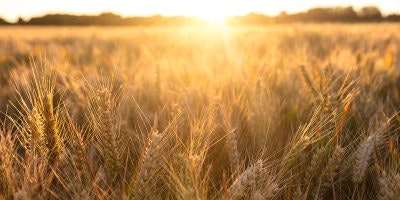Mezcal has exploded in popularity over the past few years. In fact, these days it’s pretty unusual to walk into a cocktail bar and NOT see mezcal featured in a cocktail. At some really great bars, you’ll even find flights of mezcal to tickle your tastebuds. That said, there is still a lot to learn in regards to the category—from the production to the taste.
One thing to consider is that mezcal is a lot like wine. Just as there are many different varieties of grapes to make wine, so too are there many agave varieties to make mezcal. However, the agave variety most seen around the world is Agave Angustifolia, better known as espadín. But we highly encourage you to widen your palate and seek out some of these other variations. Here are a few mezcal agave varieties beyond espadín to consider for your next purchase.
Agave Salmiana
Common Agave Name: Green Giant
Miel de Tierra Joven Agave Salmiana
Miel de Tierra hails from Zacatecas, a state in Mexico which is much farther north than the center of mezcal production in Oaxaca. The line seeks to show more elegant and earthy flavors than the typical smoky and wild examples from the south. Miel de Tierra Joven Agave Salmiana is the only selection in the portfolio to feature mezcal agave varieties from outside of the distillery’s home. In fact, the wild Salmiana variety used is found to the east in the San Luis Potosi region. Most of the brand’s mezcals are aged in local, virgin oak, however this is joven is unaged.
Flavor Profile: Spicy & Sweet
Agave Americana Oaxacensis
Common Agave Name: Arroqueño
El Jolgorio Arroqueño Mezcal
This mezcal is distilled from 100% Agave Americana—commonly known as arroqueño—which grow semi-wild in Miahuatlan, Oaxaca. The agaves are harvested after 14 years and pit-roasted in the traditional manner. The roasted piñas are crushed using a mule-drawn tahona and then the juices are open fermented. The mezcal is double-distilled and produced in small batches in order to sustainably conserve the wild agave plants. Arroqueño is known for its enormous size and long ripening period which can take as long as 30 years.
Flavor Profile: Fruity & Sweet
Agave Papalometl
Common Agave Name: Cupreata
Del Maguey Wild Papalome Mezcal
Papalome or Papalometl, meaning “butterfly” in the Nahuatl language, is a wild-harvested agave that is fairly similar in appearance to tobalá. This offering from Del Maguey is made by Maestro Mezcalero Fernando Caballero Cruz in San Pedro Teozacoalco, Oaxaca. Maestro Fernando’s method of distillation is a bit unusual as he employs stainless steel pot stills with a clay and bamboo condenser, which offers what some might say is the best of both worlds.
Flavor Profile: Earthy & Smoky
Agave Marmorata
Common Agave Name: Tepextate
Koch el Mezcal Tepextate
Tepextate agaves are beautiful to look at—a massive prehistoric plant with leaves that twist and curl. These wild agaves are harvested after 15 years of maturation. The mezcal is traditionally made by Master Mescalero Pedro Hernández in the village of San Baltazar Guelavila, Oaxaca. The agaves are roasted using red oak and mesquite followed by a horse-drawn tahona to crush the agaves. Then fermentation is done in an open-air pine and oak vat. The mezcal is twice-distilled in copper pot still and bottled.
Flavor Profile: Fruity & Sweet
Agave Durangensis
Common Agave Name: Cenizo
Siembra Metl Cenizo Mezcal
Oaxaca is synonymous with mezcal but it should not overshadow what’s being done in other states such as Michoacan. A spirit as expressive of terroir as mezcal makes these “particulars” quite compelling. Produced using the rare agave cenizo in the method ancestral, this mezcal is distilled in both oyamel and pine wood stills. Up until certification, everything is measured purely by the senses and instincts of Maestro Mezcalero Don José Emilio Vieyra Rangel and his son Emilio Vieyra. In other words, it’s made exactly as it would have been over 400 years ago.
Flavor Profile: Herbal & Earthy
Agave Maximiliana
Common Agave Name: Lechuguilla
La Venenosa Costa Raicilla (Black Label)
Hailing from Jalisco, the home of tequila, in the small town of Mascota, this raicilla is the epitome of “old school”. It is distilled once in a homemade pot still that was assembled from found materials. A small portion is kept separate to distill a second time. This is then added back to the distillate to give it more depth and body as well as to increase the proof. Further separating it from typical Oaxacan mezcal, here the agaves are roasted in an above-ground adobe oven. After roasting, the heavily-charred parts are scraped off giving this mezcal a cleaner, almost smokeless profile.
Flavor Profile: Herbal & Earthy
Agave Karwinskii
Note: There are several sub-species of agave under A. Karwinskii including Barril, Cuixe, Tobasiche, and Madre-Cuixe
Wahaka Mezcal Joven Madre-cuixe
For this release, Wahaka Mezcal harvests wild madre-cuishe from the lowlands of Oaxaca’s Central Valleys. Typically found at 900-2,000 meters above sea level, the rare agave is harvested after a minimum of 12 years of maturation. Then the agaves are cooked for 3-5 days in an earthen pit using ocote or pine wood. The cooked agaves are crushed by a tahona and fermented for 10-12 days in open pine vats using wild yeast. Lastly, distillation occurs in a copper pot still. The final spirit is bottled at 84 proof with no aging.
Flavor Profile: Mineral & Earthy
Real Minero Barril Mezcal
Real Minero is a labor of love for the Angeles family. Four generations of know-how goes into each bottle. Father Don Lorenzo and son Eduardo produce the mezcal, Mother Dona Florentina does the bottling and daughter Graciela handles the marketing. The family produces mezcal using the method ancestral, a very rustic method of distillation utilizing clay stills and bamboo tubing. Barril is a subspecies of agave in the Karwinskii family in which the piñas are tall like a palm tree. It is also famous for being intensely earthy, herbal and full-bodied.
Flavor Profile: Herbal & Earthy
Rey Campero Cuishe Mezcal
Rey Campero is produced in the community of Candelaria Yegolé, Oaxaca by mezcalero Rómulo Sánchez Parada, who is committed to agave conservation with sustainable practices. The cuishe is matured 8-10 years before harvest for this mezcal and roasted for 4-5 days. Next, the cooked agave then rests for 5 days before being crushed by mule-pulled tahona. Then fermentation occurs in the open air with wild yeast. Finally, the mezcal is double-distilled in a copper pot still and bottled without aging.
Flavor profile: Fruity & Smoky
Agave Potatorum
Common Agave Name: Tobalá
Mezcal Vago Tobalá
Crafted by Aquilino García López, the wild-harvested tobalá used here is sourced from the Highlands near the source of the Quichapa River, at an elevation averaging around 6000 feet. Like all Aquilino’s mezcals, Vago Tobalá is crafted in the traditional method at his palenque in Candelaria Yegolé, Oaxaca. This includes earthen-ovens for cooking the agaves, pinewood fermentation-vats, and a 200-liter copper-still. The mezcal is rested in inert steel tanks for three months before being bottled—by hand, of course!
Flavor Profile: Herbal & Mineral
Want to try more mezcal agave varieties?
With Distiller, you’ll always know what’s in the bottle before you spend a cent. Rate, Review and Discover spirits! Head on over to Distiller, or download the app for iOS and Android today!


